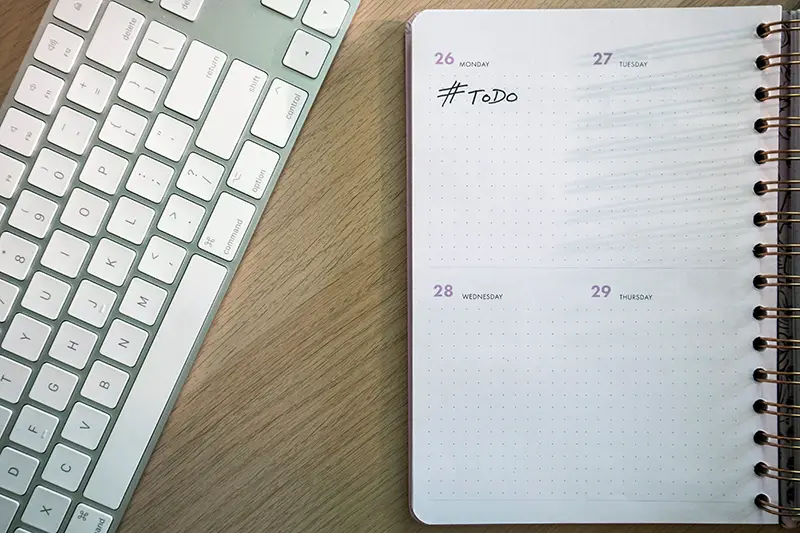The Definitive Answer: Annual Working Days
How many working days are in a year? For UK employees, the answer is 253 working days in a standard year, or 254 working days in a leap year. This calculation is based on removing weekends (104 days) and public holidays (8 days) from the total calendar days.
Here's the precise breakdown of annual working days:
- Standard year (365 days): 253 working days
- Leap year (366 days): 254 working days
- Weekends removed: 104 days (52 weekends)
- Public holidays removed: 8 days (standard UK bank holidays)
Why does this vary? The single-day difference between standard and leap years occurs when 29th February falls on a weekday, adding one extra working day every four years. Additionally, special occasions may introduce extra public holidays, and different UK regions observe slightly different holiday calendars.
For HR professionals, this figure represents the maximum available working days before accounting for annual leave, sick days, training, or other absences. Understanding this baseline is essential for accurate workforce planning, project scheduling, and resource allocation across your organisation.
Calculating Working Days: The Systematic Approach
Calculating working days per year requires a methodical approach that accounts for calendar variations and regional differences. While the basic mathematics appear straightforward, practical applications demand deeper consideration of organisational and regulatory factors.
The Foundation Calculation
The standard formula for determining annual working days follows these steps:
- Start with total calendar days: 365 (or 366 in leap years)
- Subtract weekends: 104 days (52 Saturdays + 52 Sundays)
- Subtract public holidays: 8 days (England and Wales standard)
- Result: 253 or 254 working days
This calculation assumes a Monday-to-Friday working pattern, which remains the standard for most UK organisations. However, HR teams must adjust these figures for businesses operating alternative schedules or in sectors with different working patterns.
Regional Variations in Public Holidays
UK public holiday entitlements vary by region, affecting the total working days calculation:
- England and Wales: 8 public holidays (253/254 working days)
- Scotland: 9 public holidays (252/253 working days)
- Northern Ireland: 10 public holidays (251/252 working days)
For organisations with employees across multiple UK regions, these variations require careful consideration in workforce planning and ensuring equitable treatment across locations.
Factors That Affect Working Days Calculations
Leap Years and Calendar Anomalies
Leap years introduce complexity beyond simply adding one day. The impact depends on which day of the week 29th February falls. If it's a weekday, you gain one working day; if it's a weekend, the total working days remain unchanged from a standard year.
Additionally, when fixed public holidays fall on weekends, substitute days are typically declared, maintaining the same number of non-working days but shifting their timing within the year.
Special Occasions and Additional Holidays
Extraordinary events can alter the standard working days calculation. Recent examples include additional bank holidays for royal occasions, such as the extra holiday declared for King Charles III's coronation in 2023. While these are typically announced well in advance, they require adjustment in annual planning calculations.
Organisational Factors
Many organisations observe additional non-working days beyond statutory requirements:
- Company shutdown periods (particularly between Christmas and New Year)
- Additional religious or cultural holidays
- Annual company events or team-building days
- Professional development and training days
These organisation-specific factors can reduce available working days by 2-5 days annually, significantly impacting workforce capacity calculations.
Working Days Across Different Employment Patterns
Part-Time and Flexible Working
The traditional 253/254 working days calculation applies to full-time Monday-to-Friday employees. Part-time workers and those on flexible arrangements require proportional calculations based on their specific working patterns.
For example, an employee working three days per week would have approximately 152 working days annually (253 ÷ 5 × 3), assuming proportional public holiday entitlements.
Compressed Hours and Alternative Schedules
Four-day working weeks and compressed hour arrangements maintain similar annual working day totals but distribute them differently. An employee on a four-day week might work 202 days annually (253 ÷ 5 × 4), though some organisations maintain five-day equivalency with longer daily hours.
These arrangements require careful consideration in workforce planning and resource allocation, as they affect project timelines and team coordination in ways that simple day-counting doesn't capture.
International Perspective: Global Working Days
Understanding how UK working days compare internationally provides valuable context for multinational organisations and global workforce planning. While most developed countries operate similar Monday-to-Friday patterns, public holiday allocations vary significantly.
According to official government data, the UK's eight public holidays place it in the lower range compared to many European neighbours:
- Germany: 9-13 public holidays (varies by state)
- France: 11 public holidays
- Spain: 14 public holidays (national and regional)
- United States: 10-11 federal holidays
These variations have significant implications for global project coordination, resource allocation across international teams, and ensuring equitable workload distribution in multinational organisations.
Strategic Workforce Planning Applications
Capacity Planning and Resource Allocation
Accurate working days calculations form the foundation of effective capacity planning. Understanding that employees have 253 available working days (before annual leave deductions) rather than assuming 260 days (52 weeks × 5 days) prevents over-commitment and unrealistic deadline setting.
This distinction becomes particularly important in project-based organisations where accurate time estimation directly impacts client satisfaction and profitability.
Annual Leave and Absence Management
Working days calculations integrate closely with annual leave planning. With 253 working days available and typical entitlements of 25-28 days annual leave, employees actually work approximately 225-228 days annually. This realistic figure should inform all workforce planning activities.
Understanding these patterns helps HR teams anticipate coverage needs, plan for seasonal absence trends, and ensure adequate staffing throughout the year.
Financial Planning and Cost Management
For organisations with daily rate contractors or project-based billing, accurate working days calculations directly impact financial planning. The difference between assuming 260 working days and the realistic 253 days represents a 3% variance that compounds across large workforces.
Sector-Specific Considerations
Education and Academic Calendars
Educational institutions operate on fundamentally different calendar structures, with working days heavily influenced by term times, reading weeks, and extended holiday periods. While the basic public holiday calculations remain relevant, the effective working year may be significantly shorter.
Healthcare and Emergency Services
Healthcare and emergency services often operate 365-day schedules, though individual employees still work approximately 253 days annually through shift patterns and rota systems. These sectors require sophisticated workforce planning to maintain continuous coverage while respecting working time regulations.
Retail and Hospitality
Retail and hospitality sectors frequently operate on public holidays, requiring different approaches to working days calculations. While employees may work on bank holidays, they typically receive time off in lieu, maintaining similar annual working day totals but with different distribution patterns.
Optimising Working Days for Maximum Effectiveness
Strategic Scheduling
Rather than simply maximising working days, effective organisations focus on optimising productivity within available time. This includes strategic scheduling of meetings, projects, and deadlines to align with natural business rhythms and employee energy levels.
Managing Seasonal Variations
Working days aren't distributed evenly throughout the year. December typically has fewer working days due to Christmas holidays, while August may see reduced capacity due to summer holidays. Successful workforce planning anticipates these patterns and adjusts expectations accordingly.
Effective workforce planning recognises that maximising the quality and focus of working days often yields better results than simply increasing their quantity.
Technology and Working Days Management
Modern HR systems increasingly automate working days calculations, accounting for regional variations, organisational policies, and individual working patterns. These systems help ensure accurate capacity planning while reducing administrative overhead.
However, technology should complement, not replace, strategic thinking about how working days are utilised. The most effective HR teams combine accurate calculations with thoughtful planning about workload distribution and employee wellbeing.
Future Trends in Working Days
The concept of working days continues evolving with changing work patterns, technological advances, and shifting employee expectations. Hybrid working, results-focused management, and flexible scheduling all challenge traditional working days calculations while creating new opportunities for productivity improvement.
HR professionals must balance maintaining accurate baseline calculations with adapting to new working patterns that may make traditional day-counting less relevant for measuring productivity and planning resources.
Working Days: Foundation for Strategic HR
The question "how many working days are in a year?" has a clear answer: 253 in standard years, 254 in leap years. However, the strategic value for HR professionals lies in understanding how to apply this knowledge for effective workforce planning and organisational success.
Accurate working days calculations enable realistic project planning, fair workload distribution, and effective resource allocation. They provide the foundation for annual leave planning, capacity management, and ensuring compliance with employment regulations while maintaining operational effectiveness.
Most importantly, understanding working days helps create realistic expectations that support both business objectives and employee wellbeing. When planning is based on accurate time calculations rather than theoretical maximums, organisations create more sustainable, productive working environments.
The future of work may continue evolving, but the need for accurate time planning remains constant. Whether managing traditional five-day schedules or innovative flexible arrangements, successful HR professionals understand that effective workforce planning starts with realistic calculations of available working time.
By combining accurate working days calculations with strategic thinking about productivity, wellbeing, and business objectives, HR teams can create workplace environments where both individuals and organisations thrive within realistic time constraints.





